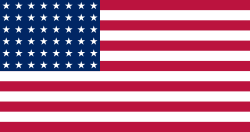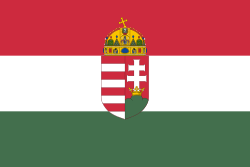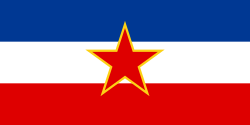Nordisk kombination vid olympiska vinterspelen 1936
| Nordisk kombination vid de IV:e olympiska vinterspelen | |
 | |
| Datum | 12-13 februari 1936 |
|---|---|
| ← Lake Placid 1932 Sankt Moritz 1948 → | |
Resultat från tävlingarna i nordisk kombination vid olympiska vinterspelen 1936 i Garmisch-Partenkirchen.
Medaljörer
| Gren | Guld | Silver | Brons |
| Herrar | Norge | Norge | Norge |
Resultat
Herrar
| Pl. | Nr | Namn | Totalt |
|---|---|---|---|
| 1 | 59 | 430.3 | |
| 2 | 102 | 419.8 | |
| 3 | 19 | 408.1 | |
| 4 | 22 | 401.2 | |
| 5 | 95 | 394.3 | |
| 6 | 40 | 393.8 | |
| 7 | 73 | 393.3 | |
| 80 | 393.3 | ||
| 9 | 23 | 387.4 | |
| 10 | 43 | 383.8 | |
| 11 | 41 | 382.7 | |
| 12 | 1 | 381.5 | |
| 13 | 24 | 380.7 | |
| 14 | 63 | 379.1 | |
| 15 | 108 | 375.2 | |
| 16 | 90 | 375.0 | |
| 17 | 114 | 372.1 | |
| 18 | 106 | 371.9 | |
| 19 | 115 | 368.4 | |
| 20 | 27 | 368.3 | |
| 21 | 69 | 367.3 | |
| 22 | 109 | 366.4 | |
| 23 | 96 | 364.9 | |
| 24 | 35 | 363.8 | |
| 25 | 98 | 361.9 | |
| 26 | 81 | 359.4 | |
| 27 | 32 | 355.8 | |
| 28 | 88 | 355.5 | |
| 29 | 86 | 350.9 | |
| 30 | 99 | 350.1 | |
| 31 | 15 | 348.8 | |
| 32 | 101 | 345.5 | |
| 33 | 67 | 333.2 | |
| 34 | 97 | 331.4 | |
| 35 | 30 | 330.3 | |
| 36 | 65 | 327.7 | |
| 37 | 100 | 325.5 | |
| 38 | 46 | 316.7 | |
| 39 | 74 | 315.4 | |
| 40 | 103 | 313.2 | |
| 41 | 37 | 306.9 | |
| 42 | 54 | 282.7 | |
| 43 | 68 | 278.8 | |
| 44 | 70 | 273.9 | |
| 45 | 14 | 249.3 | |
| 46 | 56 | 244.7 | |
| – | 66 | DNF | |
| 110 | DNF | ||
| 5 | DNF | ||
| 28 | DNF | ||
| 113 | DNF |
Deltagare
Totalt deltog 51 aktiva från 16 länder:
 Finland (4)
Finland (4) Italien (2)
Italien (2) Japan (3)
Japan (3) SFR Jugoslavien (4)
SFR Jugoslavien (4) Kanada (4)
Kanada (4) Lettland (1)
Lettland (1) Norge (4)
Norge (4) Polen (4)
Polen (4) Schweiz (3)
Schweiz (3) Storbritannien (1)
Storbritannien (1) Sverige (3)
Sverige (3) Tjeckoslovakien (4)
Tjeckoslovakien (4) Tyskland (4)
Tyskland (4) Ungern (2)
Ungern (2) USA (4)
USA (4) Österrike (4)
Österrike (4)
Källor
- Den här artikeln är helt eller delvis baserad på material från engelskspråkiga Wikipedia.
Externa länkar
- Internationella olympiska kommitténs resultatdatabas
- Officiell olympisk rapport
- Wudarski, Pawel (1999). ”Wyniki Igrzysk Olimpijskich”. http://olympic.w.interia.pl/. Läst 16 maj 2008. (polska)
| |||||||||||
| ||||||||||||||
Media som används på denna webbplats
Pictograms of Olympic sports - Nordic combined
Flag of Second Polish Republic and later People's Republic of Poland in period from March 29, 1928 to March 10, 1980. Red shade used here is HTML "vermilion" #E34234. Proportion 5:8.
Flag of Second Polish Republic and later People's Republic of Poland in period from March 29, 1928 to March 10, 1980. Red shade used here is HTML "vermilion" #E34234. Proportion 5:8.
National flag and merchant ensign of Germany from 1935 to 1945.
US Flag with 48 stars. In use for 47 years from July 4, 1912, to July 3, 1959.
Variant version of a flag of Japan, used between January 27, 1870 and August 13, 1999 (aspect ratio 7:10).
Variant version of a flag of Japan, used between January 27, 1870 and August 13, 1999 (aspect ratio 7:10).
The Canadian Red Ensign used between 1921 and 1957.
This image has compared for accuracy (mainly colors) using an image from World Statesmen. The only change is making the maple leaves green from red. This image has compared for accuracy (mainly colors) using an image from World Statesmen. The most recent version of this image has changed the harp into one with a female figure; see [http://flagspot.net/flags/ca-1921.html FOTW
The Canadian Red Ensign used between 1921 and 1957.
This image has compared for accuracy (mainly colors) using an image from World Statesmen. The only change is making the maple leaves green from red. This image has compared for accuracy (mainly colors) using an image from World Statesmen. The most recent version of this image has changed the harp into one with a female figure; see [http://flagspot.net/flags/ca-1921.html FOTW
Flag of Hungary, from 6 November 1915 to 29 November 1918 and from August 1919 until mid/late 1946.
Flag of the Socialist Federal Republic of Yugoslavia (1946-1992).
The design (blazon) is defined in Article 4 of the Constitution for the Republic of Yugoslavia (1946). [1]
Flag of the Socialist Federal Republic of Yugoslavia (1946-1992).
The design (blazon) is defined in Article 4 of the Constitution for the Republic of Yugoslavia (1946). [1]
Författare/Upphovsman: Gutten på Hemsen, Licens: CC0
Flag of Norway with colors from the previous version on Commons. This file is used to discuss the colors of the Norwegian flag.
Olympic Rings without "rims" (gaps between the rings), As used, eg. in the logos of the 2008 and 2016 Olympics. The colour scheme applied here was specified in 2023 guidelines.
Olympic Rings without "rims" (gaps between the rings), As used, eg. in the logos of the 2008 and 2016 Olympics. The colour scheme applied here was specified in 2023 guidelines.
Pan-Slavic flag. Emerged from 1848 Prague pan-Slavic conference, or interpretations of the resolutions of the conference. Drawn by Fibonacci.
Författare/Upphovsman: F l a n k e r, Licens: CC BY-SA 2.5
Flag of the Kingdom of Sardinia (1851-1861) and of the Kingdom of Italy (1861-1946). Use: Civil flag and ensign. In a governmental or a military context, the crowned version (see Crowned version) was always used (as State flag and naval ensign).


























